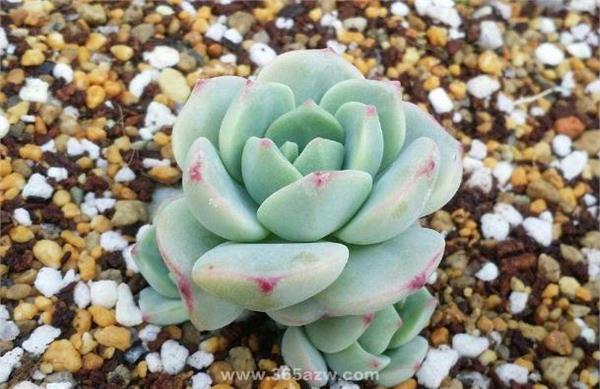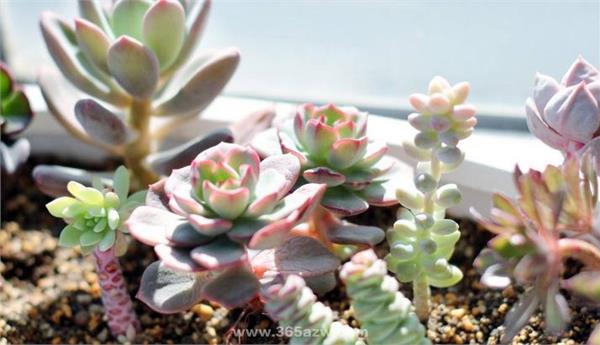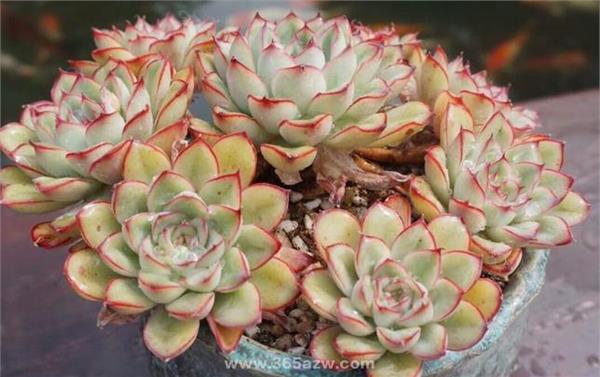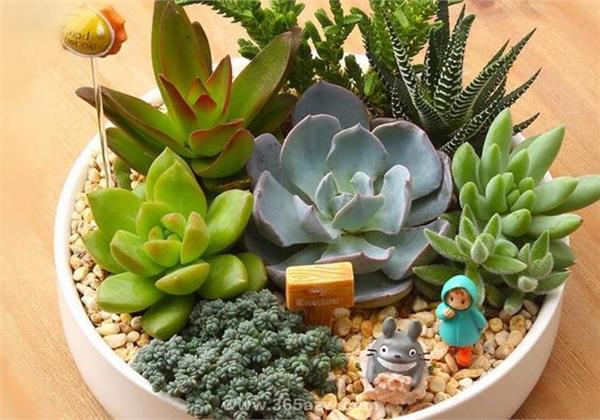How to raise succulent plants
Many friends do not have a special understanding of succulent plant culture methods, today for you to briefly introduce succulent plant culture instructions, let's take a look at it.

What is a succulent plant
There are both broad and narrow explanations for the definition of succulent plants. In a broad sense, succulent plants refer to all plants with thick succulent stems, leaves or roots, including all species of cactus, apricot and more than 50 other families, with a total of more than 10,000 species.
Succulent plants or succulent flowers in a narrow sense do not include cactus plants, but cactus plants are specifically called cactus plants or cactus flowers, which are referred to as cacti or cacti for short. The reason for separation is that there are differences in habits, cultivation and reproduction between them. At present, experts at home and abroad are basically described separately. Generally mentioned succulent flowers or succulent plants refer to the narrow definition, which mainly refers to the fleshy roots, stems and leaves of Apricaceae, crassulaceae, Euphorbiaceae, tequila, Ramoaceae and Liliaceae, but does not include cactus plants.

Notes on succulent plant culture
1. Sowing and reproduction
In succulent plants, except for a few species that can self-pollinate, most of them belong to insect-pollinated or bird-pollinated flowers, which must be artificially pollinated to bear fruit. The seeds of succulent plants have a short lifespan, such as Guangtang, which lasts only a few weeks. In general, the germination rate of succulent plant seeds decreases rapidly when stored at room temperature for one year, so many succulent plants are sown after harvesting or stored in the following spring. The sowing and germination time of different families and genera is also different, the early 2 days can germinate, the late 25 days will germinate.
2. Leaf cutting propagation
Succulent plants often use thick leaves to be placed on slightly moist sand beds or loose soil, which will soon take root and produce adventitious buds on the base of the leaves, forming small plants, such as Tianzhang, stone lotus, big leaves and so on.

3. Stem cutting propagation
Succulent plants are pruned and reshaped, cutting branches for cuttings, such as desert rose, purple dragon horn, tiger thorn plum, Caiyun Pavilion, and so on. Desert roses, African overlord trees, green peaks and so on will flow out white milk in the cut wounds. Qianjing must be treated, and then cut after a little drying, the effect is better.
4. Root cutting propagation
For the 12-volume species of Liliaceae, the roots of the more valuable varieties are very stout and developed. The mature fleshy roots are cut off and buried in the sand bed, and the upper part is slightly exposed to maintain a certain amount of moisture and bright light, which can sprout new buds from the top of the roots and form complete plantlets.

5. Grafting propagation
The grafting of succulent plants is often used to breed brocade and ornamental varieties, such as Bawang whip as rootstock to graft Chunfeng, horsetooth tree as rootstock to graft Yale dance, African overlord tree as rootstock to graft African overlord tree, big flower rhinoceros horn as rootstock to graft purple dragon horn, etc., the ornamental effect is good. However, in the process of grafting, because the plant contains white emulsion and high viscosity, the grafting operation should be fast and skillful in order to achieve success.
Related
- Wuhan Hospital Iron Tree Blooming Result Was Instantly Frightened by the Gardener Master
- Which variety of camellia is the most fragrant and best? Which one do you like best?
- What is the small blue coat, the breeding methods and matters needing attention of the succulent plant
- Dormancy time and maintenance management of succulent plants during dormancy
- Minas succulent how to raise, Minas succulent plant pictures
- What are the varieties of winter succulent plants
- How to raise succulent plants in twelve rolls? let's take a look at some experience of breeding twelve rolls.
- Attention should be paid to water control for succulent plants during dormant period (winter and summer)
- Watering experience of twelve rolls of succulent plants
- Techniques for fertilizing succulent plants. An article will let you know how to fertilize succulent plants.



